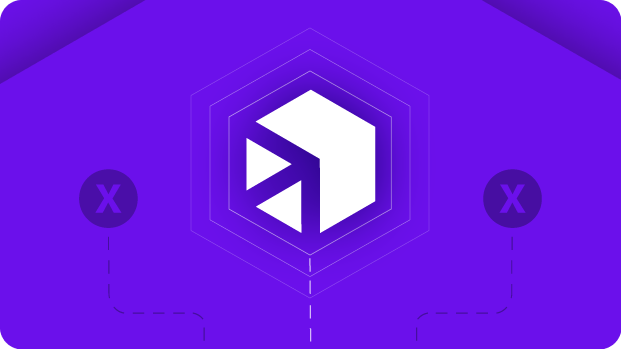February 8, 2024
Passamos a reconhecer a mudança na expressão facial.
Aqui na Digibee, participamos de muitos eventos de tecnologia presenciais. A mudança de expressão que mencionei acima geralmente segue um padrão. Primeiro, envolvemos um participante do evento em uma conversa, contamos sobre a iPaaS sem servidor da Digibee, a capacidade dos nossos usuários de escalar de forma contínua, nossas capacidades orientadas a eventos e fazemos uma rápida demonstração ao vivo da interface do nosso iPaaS.
Podemos literalmente ver o interesse crescendo à medida que falamos. Então acontece a mudança: “Oh, espere, já usamos XYZ para integração.”
Com certeza, sua organização está usando alguma coisa para integração. Com o número médio de aplicações SaaS ultrapassando bem mais de 100 implementações (e crescendo) na maioria das organizações – sem mencionar os vários sistemas, fontes de dados e APIs em produção – é muito provável que você esteja usando alguma combinação de iPaaS, tecnologia de automação, ESBs, middleware e codificação desenvolvida internamente para juntar tudo isso.
E estamos bem cientes da relutância em adicionar mais ferramentas ou em substituir tecnologias instaladas. Você precisa ter certeza de que não está apenas adicionando mais complexidade ao que já deve parecer uma expansão tecnológica insustentável. Uma ferramenta a mais e uma linha orçamentária a mais requerem que o valor seja validado.
A tecnologia de integração deve capacitar os desenvolvedores… ainda assim, em meio a toda essa expansão muitas vezes se torna o gargalo para a produtividade. E, no entanto, o os pontos problemáticos associados aos vários provedores legados de iPaaS são reais. A tecnologia de integração, quando realmente funciona do jeito que foi planejado, deve capacitar desenvolvedores e arquitetos a inovar e construir. Sim, existe um caminho melhor.
Assim, voltando ao participante do evento que estava animado com a Digibee até perceber que sua organização já tinha uma solução de integração implantada… Isso soa como o fim da conversa, mas na verdade é onde nossa conversa começa. De fato, a maioria dos novos usuários da Digibee já tinha alguma forma de tecnologia de integração em vigor, muitos já executando uma (ou mais!) soluções de iPaaS.
Novos usuários da Digibee normalmente começam com um de dois cenários: uma substituição de um iPaaS existente ou a adição da Digibee enquanto deixa o legado em vigor (por enquanto).
Os pontos de dor que você identifica para sua empresa ajudarão a determinar o melhor caminho a seguir para uma estratégia moderna de integração. Você pode optar por implantar a Digibee para coexistir com um produto legado. Ou você pode optar por encerrar o relacionamento completamente e avançar sem restrições para o futuro com a Digibee. Vamos examinar cada opção a seguir.
>> Agende uma demonstração personalizada com nossa equipe de especialistas e veja como o iPaaS da Digibee trará eficiência ao seu negócio.
Opção 1: Coexistir
Coexistir com uma solução de integração legada faz muito sentido para organizações que desejam promover mudanças rapidamente.
Ao implantar um iPaaS em conjunto com seu sistema existente, você mantém o status quo enquanto rapidamente estabelece uma plataforma moderna, que pode ser utilizada por todos os seus desenvolvedores, para reduzir os backlogs e permitir trilhas de inovação.
Gatilhos de coexistência
- Backlogs de projetos de TI em constante crescimento que sufocam o crescimento e o sucesso do negócio.
- Recursos limitados para realizar o trabalho de integração.
- Aumento do custo de licenciamento cada vez que você adiciona capacidade.
Benefícios de coexistência
- Treine e capacite rapidamente cada desenvolvedor para criar e gerenciar integrações sem nenhum custo extra. Recursos limitados para realizar o trabalho de integração.
- Concentre-se no trabalho que sua solução legada é incapaz de realizar. Reduza e elimine pendências de projetos de TI em tempo recorde.
- Acelere iniciativas de inovação em um ambiente combinável onde coexistem facilmente aplicativos e componentes modernos de diferentes fornecedores.
Mais importante ainda, o tempo e os recursos que você investe em um modelo de integração de coexistência hoje apoiarão a migração total do seu produto de integração legada quando você estiver pronto para dar esse passo final. Com um iPaaS moderno já em vigor, a transição será acelerada. Em vez de começar do zero, você estará a caminho. Certifique-se de capturar essas eficiências no seu modelo de ROI.
História de sucesso de coexistência: Payless
A Payless, uma rede global de varejo de calçados, precisava implementar uma nova plataforma de e-commerce para que o varejista pudesse vender seus produtos em loja online. A Payless selecionou a Digibee para integrar seu software de gerenciamento de varejo com a nova plataforma de e-commerce.
Embora a Payless já tivesse uma solução legada em funcionamento, a empresa sabia que levaria tempo demais, seria muito caro e exigiria muitos recursos em tempo integral. Para acelerar o projeto, o varejista optou por instalar a Digibee em paralelo com o antigo sistema.
A iniciativa foi um sucesso retumbante, com a Digibee conectando o novo sistema de ecommerce em 200 lojas, em 15 países, em menos de 30 dias. Veja a história completa:
Opção 2: Substituir
Um cenário de “substituição total” raramente é fácil, independentemente da tecnologia. A substituição de qualquer sistema crítico para os negócios sempre exige uma análise significativa – especialmente ao fazer a transição de seu produto de integração legado para um iPaaS moderno, sistemas que literalmente conectam toda a sua empresa.
No entanto, os benefícios são impressionantes e definitivamente valem a pena. Uma vez implementado, o novo iPaaS proporciona à empresa eficiências e economias de custos sem precedentes, ao mesmo tempo em que acelera trilhas de inovação importantes que apoiam a transformação digital e outras iniciativas progressivas.
Gatilhos de substituição total
- Incapacidade de reduzir despesas e aumentar o custo total de propriedade (TCO) para o desenvolvimento.
- Atualizações de sistema caras e demoradas e processos de término de suporte desviam recursos de trabalhos de maior valor.
- Crescentes backlogs de projetos de TI sufocam o crescimento e o sucesso do negócio.
- Incapacidade de suportar tecnologias modernas que dependem de integrações escaláveis e ágeis.
- Retorno sobre o investimento (ROI) em declínio à medida que os custos de manutenção do sistema legado superam rapidamente qualquer valor para o negócio.
- Desenvolvedores de integração especializados são muito caros para contratar, reter e treinar continuamente.
- Incapacidade de apoiar iniciativas de fusão e aquisição.
Benefícios de substituição total
As vantagens são semelhantes às que você realizaria com um cenário de coexistência. No entanto, as eficiências aumentam ainda mais sem o ônus de uma solução legado funcionando em paralelo.
- Treine e capacite rapidamente cada desenvolvedor para construir e gerenciar integrações sem custo adicional.
- Reduza imediatamente e até elimine os backlogs de projetos de TI em tempo recorde.
- Acelere a inovação dentro de um ambiente componível onde aplicações e componentes modernos coexistem facilmente dentro de uma infraestrutura estabelecida.
História de sucesso de substituição total: Johnson Brothers
A Johnson Brothers, um dos principais distribuidores de vinhos, cervejas e destilados nos Estados Unidos, enfrentou uma decisão importante quando seu sistema de integração legado se aproximou do prazo final de suporte. A empresa poderia optar por migrar para a versão em nuvem do produto atual ou escolher uma direção diferente para sua estratégia de integração.
Após uma análise cuidadosa, a Johnson Brothers decidiu substituir a solução existente, optando pelo Digibee. Eles conseguiram implementar 6 anos de integrações em apenas 6 meses.
A empresa obteve uma economia imediata de 40% na compra da plataforma de integração, com um tempo de implementação 70% mais rápido do que a atualização para a versão em nuvem do sistema legado. Para saber mais sobre esta história, leia um blog post especial sobre essa parceria.
Próximos passos com a Digibee
Se este blog post fez você pensar sobre como a integração moderna pode empoderar a sua equipe de desenvolvedores, recomendo que você baixe uma cópia gratuita do whitepaper da Digibee: A sua estratégia de integração empresarial inspira ou dificulta?. É um exame detalhado da economia e a eficiência que as empresas alcançam com a tecnologia moderna de integração.
Para mais informações e para iniciar a conversa, entre em contato conosco para agendar uma demonstração ao vivo do iPaaS da Digibee em ação..








